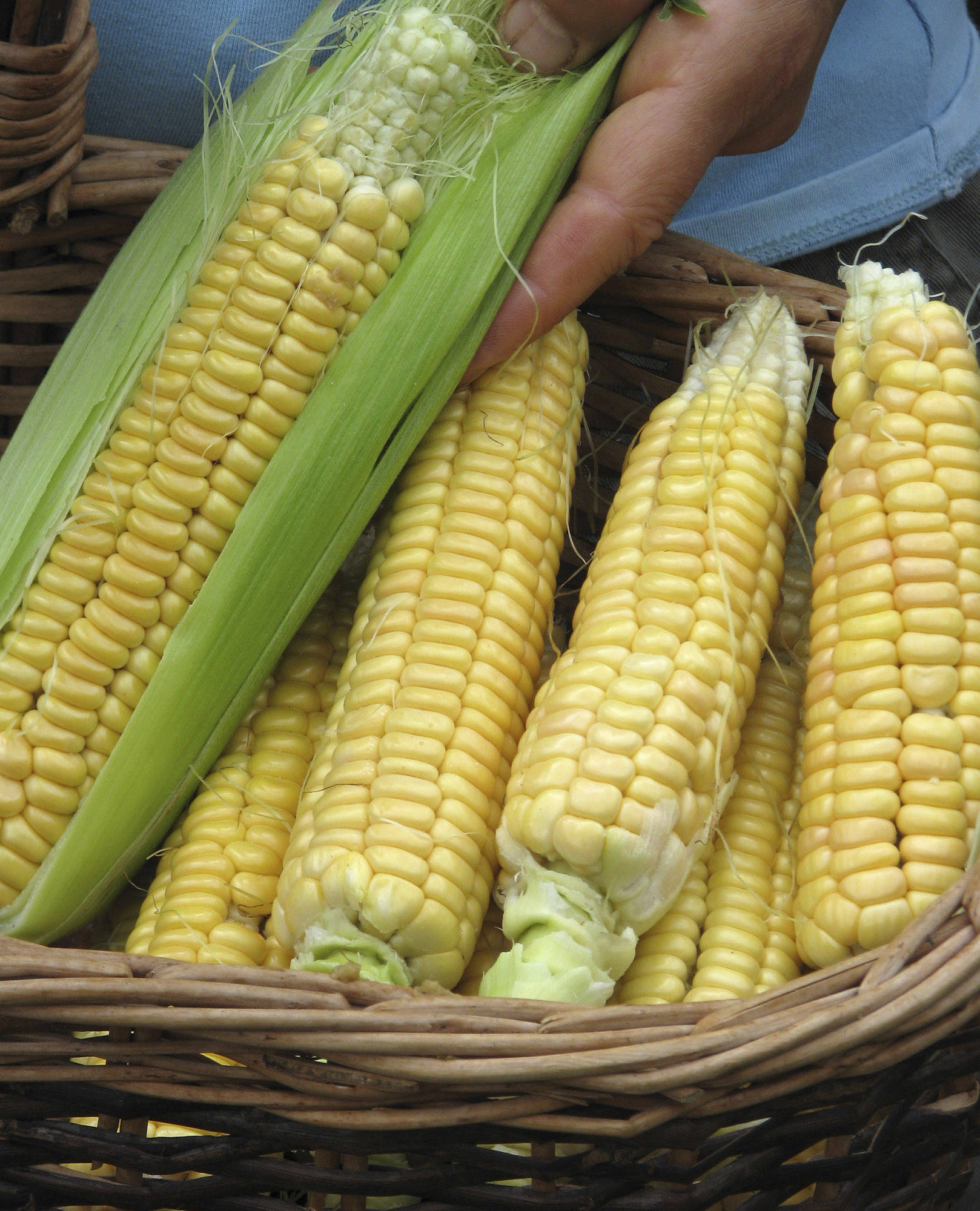You’re rummaging in the attic, in great grandma’s steamer trunk, and you come upon a dusty old packet of garden balsam seeds. An heirloom!
This heirloom’s probably more valuable for the picture on the packet than for the seeds, which probably have lost their vitality. You could, though, if you wanted, get your hands on heirloom plants that would grow.
Heirloom plants are those that have been handed down from generation to generation as saved seeds or pieces of stems or roots. These varieties produce nostalgia for bygone times and the plants’ particular qualities. Colors of heirloom flowers, for example, often are soft, as subdued as those in old-fashioned, hand-colored photos.
The muted colors of heirloom plants are counterbalanced in many cases by bold fragrances and flavors. Modern sweet peas may sport flashy and abundant blooms, but are almost scentless compared with the honey-sweet sprays of Black Knight sweet peas, introduced in 1898.
Of course, bold scents or flavors are not for everyone. You might not like the spicy, tart flavor of a Spitzenburg apple. No matter: Choose from among thousands of other heirloom apple varieties — and flavors. Modern varieties of fruits and vegetables generally have been bred for mild flavors that appeal a little to everyone but not strongly to anyone.
Variation from plant to plant
With a more casual growth habit than modern hybrids, heirlooms won’t give the ordered look of a brigade of soldiers when planted en masse. Plant-to-plant variations of heirloom flowers may be subtle, as in the almost uniform stand of blue flowers from a seed packet of Blue Boy bachelor’s buttons — a variety grown by Thomas Jefferson. Or the variations may be more dramatic, as in the occasional orange flower popping up among the reds from a packet of Gift zinnias, an heirloom variety from Russia. In some styles of garden, a blowsy look is preferred to rigid uniformity.
Heirloom plants also don’t march in step like soldiers. Plants from a packet of Golden Bantam corn, a delectable variety dating back to 1902, ripen over the course of more than a week. But plan on picking over a planting of modern Early Sunglow Hybrid corn in just a couple of days or you’ll miss peak flavor.
Heirloom availability
Most plants offered in garden centers and through the mail are not heirlooms and will never become one, not even in a hundred years. Plant Snowball Hybrid marigolds or Double Feature Hybrid cucumbers, let a few flowers and fruits mature seeds, then plant those seeds, and what do you get? Not Snowball Hybrid marigolds and Double Feature Hybrid cucumbers.
Hybrid seeds are made by bringing together pollen and egg cells from two specially chosen parents. Unless you or I grow those parents and provide for pollination, we cannot perpetuate hybrid varieties.
And even if not hybrids, many of today’s plants could not be passed along the generations because they are patented. As such, it is illegal to propagate and then distribute them.
Every year, fewer and fewer heirlooms are offered for sale.Still, heirlooms are available. Seed Savers Exchange (www.seedsavers.org) and the Thomas Jefferson Center for Historic Plants (https://www.monticello.org/site/house-and-gardens/thomas-jefferson-center-historic-plants) are among mail-order specialists in heirloom flowers and vegetables.
So plant some heirlooms and bring a bit of the past into your garden. Pass along some cuttings of your favorite old fruits, trees, shrubs, and perennials to your neighbors and to your children. Save some seeds of favorite old varieties of vegetables and annual flowers, and pass them along too. You can never tell when they might no longer be available commercially.

